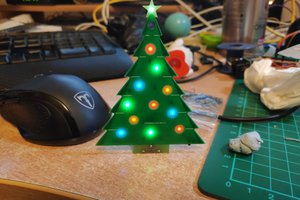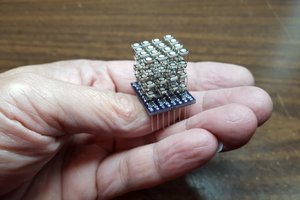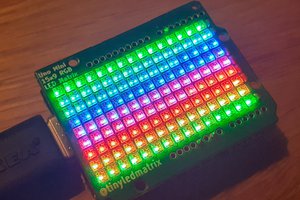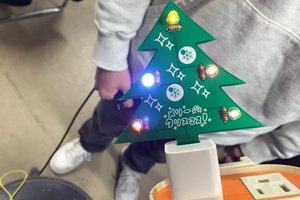I start off by designing the board in EasyEDA. As there are no premade footprints available, I had to make my own. I did this by modifying a regular footprint. I first make the pads square and move them outside of the PCB. Then I made a cutout in the middle, slidely smaller than the size of the LED. So that it can fit tightly inside.
I have also added a marking to indicate the ground pad. And our footprint is ready. Then I open a new PCB and import 64 leds and arrange them in 8x8 matrix format.
I then rotate alternative rows to be able to connect them like a chain. Next I place the nets manually followed by complete routing. Finally i added a border outline and some tabs to join them with one another and our design is complete.
Then I head over to PCBway’s website to manufacture the PCBs. you can get the same PCBs by following this link The assembly is a tricky part. You need to push the leds from backwards in the PCB. while keeping the rotation in mind. The marking on the PCB will help you to determine the GND pad. Then I solder them one by one. It’s not that hard to do and our PCB is ready for testing.
I have used Examples from the fastLED library. Which seems to work just fine. So this weird concept actually worked.
 SAYANTAN PAL
SAYANTAN PAL



 Brian Lough
Brian Lough
 Hari Wiguna
Hari Wiguna
 Alex
Alex
 Elecrow
Elecrow
What radius did you use for the corners, or did you ask them about their milling tool radius for the cutout ?